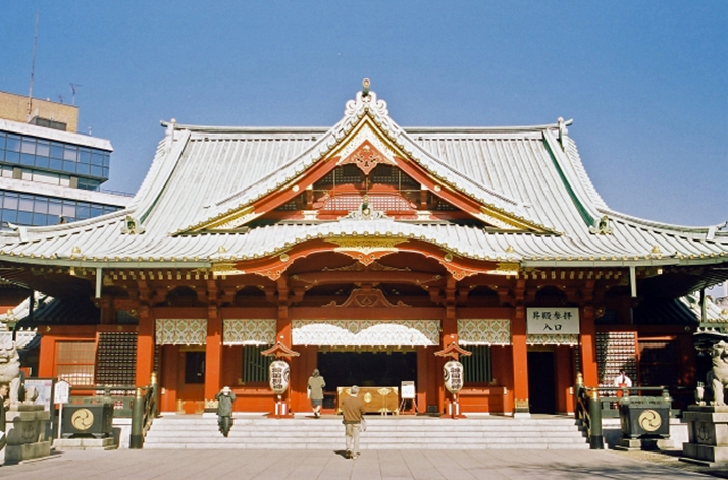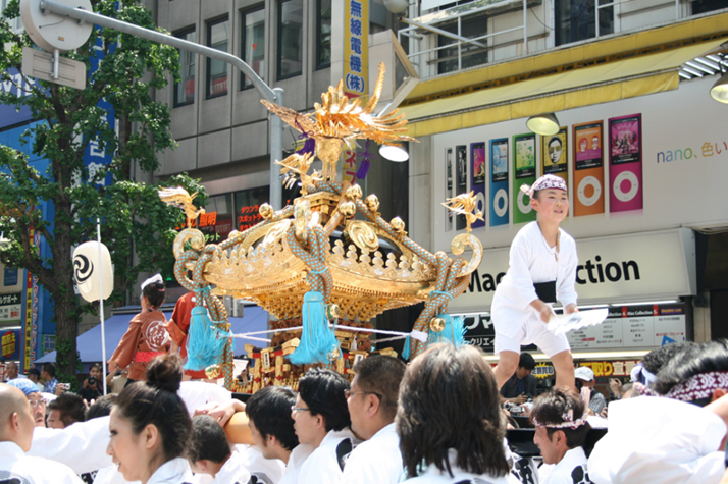Kanda Myojin Shrine is an historic Shinto shrine located in Kanda area, near to Akihabara and Ochanomizu. The Kanda Shrine has long history and was established in 730 at different site.
The shrine was known as Edo Sochinju (The center place to pray for local gods) during Edo period(1603-1867), and protected Shougun (general) and comon people.
The shrine is one of best place for visitors who like to pray for “matchmaking”, “success and prosperity in business” and “warding off calamities” as the deities of the shrine are Daikoku-sama, Ebisu-sama and Taira-no-Masakado-sama.
It enshrines the deities for 108 Tokyo neighborhoods including Akihabara, Marunouchi, Nihonbashi, Tsukiji Fish market and so on. The town of Tokyo 108, a partner town of Kanda Shrine, is a city that has condensed the life and culture of Edo and Tokyo.
Kanda Myojin Shrine was located at different place but it was moved to present site when Tokugawa Ieyasu expanded Edo Castle in 1603.
All of Buildings of Kanda Myojin Shrine were wooden style but it was destroyed by Great Kanto Earthquake in 1923. Therefore buildings were rebuilt by concrete. Fortunately, the shrine was not harmed by Second World War.
One of three major Shinto festival in Tokyo is held at Kanda Myojin Shrine named “Kanda Matsuri (Festival)” which is held every two years in May, along with the Sanno Festival and Fukagawa Festival.
The highlights of the festival includes long procession through central Tokyo, and the parades of Mikoshi(portable shrine) to Kanda Myojin Shrine.
According to a literature of Edo period, Kanda Festival started in early Edo Period(1603-1867) when the Tokugawa Ieyasu Shogun achieved unification of whole country. The reason why Kanda Myojin Shrine was selected for the place of festival was that Tokugawa Ieyasu used to order victory prayer to Kanda Shrine before the time of some battles. Then, on the day of the praying on September 15th, Tokugawa Ieyasu won at Battle of Sekigahara, and achieved unification. Therefore Tokugawa Ieyasu put importance on Kanda Festival, and it has been done grandly through Edo period as a festival of Tokugawa family fortune.
The shrine has characteristic lucky charm called “IT information safety patron” that has benefit to the protection of personal information leakage, PC malfunction and virus, and was made in 2002. The lucky charm was made here because Kanda Myojin Shrine is surrounded by Electric town and business district.
The lucky charm is popular for the enguneers and the management who run Internet business.
Hours
24 hours opended gate, and available for worship yourself in front of main shrine.
(23:00 lights turn out)
09:00 to 16:00 for praying with Shinto priest in main shrine.
Closed
No closing day
Admission
Free for entry
Praying with Shinto priest needs a charge.
Access
Ochanomizu station on JR(Chuo, Soubu) and Metro(Marunouchi) lines: 5 minutes by walk.
Akihabara station on JR(Yamanote, Keihin) and Metro: 7 minutes by walk.
Suehirotyo station on Metro Ginza line: 5 minutes by walk.



Leave a Reply